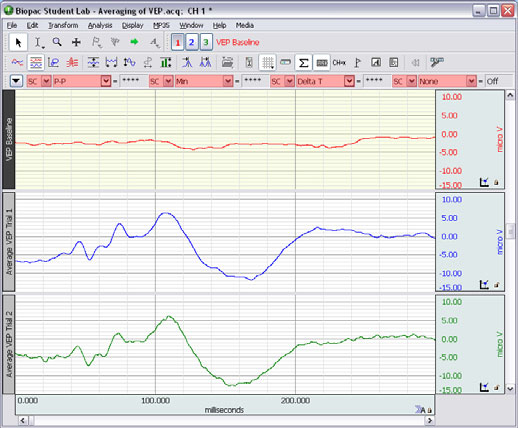H22 Visual Evoked Response

This BSL PRO lesson describes hardware and software setup of the BSL System to record and measure visual evoked potentials.
Experimental Objectives
- To present a visual stimulus to a human subject.
- To record Visual Evoked Potentials.
Tasks Performed by the Student
Record a baseline and two experimental segments using the TSD122 stroboscope.
Videos
Biopac Student Lab Student Download
Student Prep & Distance Learning
Click the link(s) below for sample data and/or lesson procedure video(s), BSL PRO Lesson procedures (PDF) for human lessons*, and graph template files (*.gtl) for BSL PRO Lessons. If more than one .gtl is available, download the .gtl with the _suffix to match BSL version and hardware.
Lesson Hardware
This lesson requires a Biopac Student Lab (BSL) System and the following hardware. If your BSL System does not include all hardware items, expand your system by selecting required items below. For more details, review the Lesson: L# BSL Lessons - see the Lab Manual or launch BSL; A# and H# BSL PRO Lessons, click the PDF link above to review full setup, recording, and analysis procedures.
Stay Connected